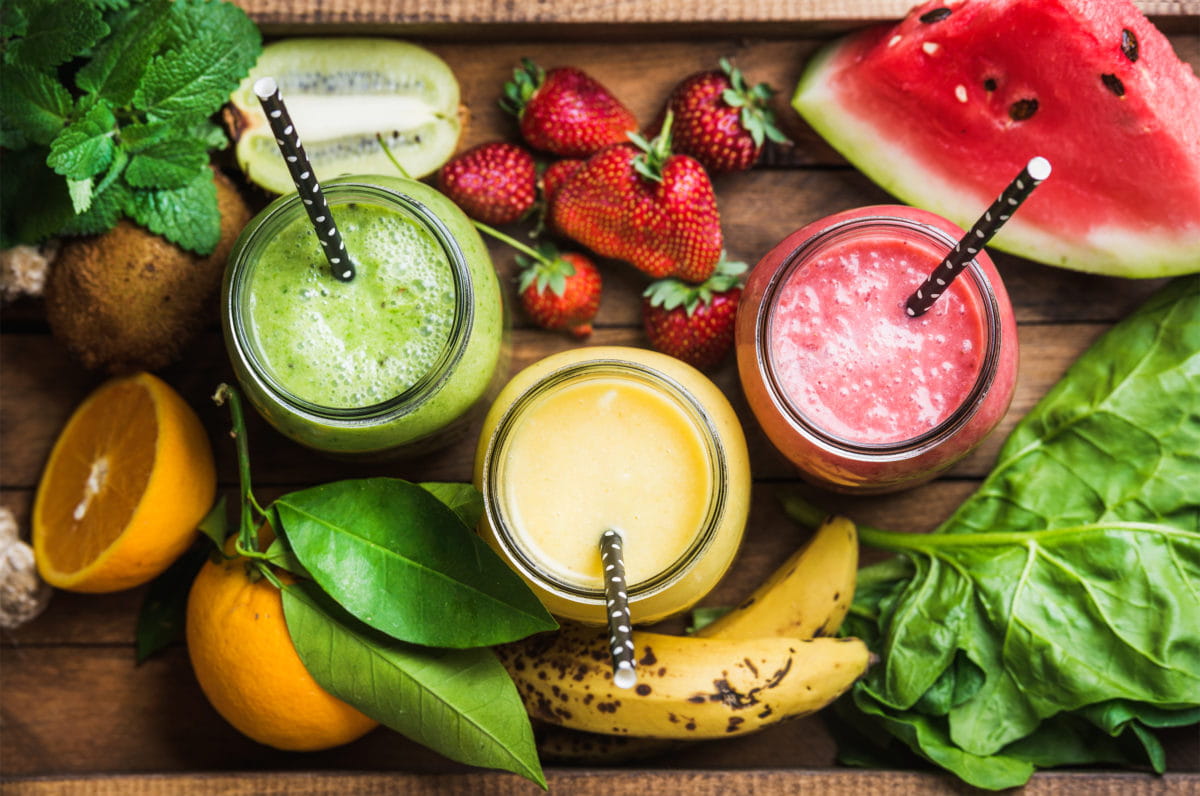Unexpected Tastes: On Building a Flavor (and the History of the Banana)
July 18, 2019
[caption id="attachment_3984" align="alignnone" width="600"] By Terry Miesle, Senior Flavorist[/caption]
By Terry Miesle, Senior Flavorist[/caption]
A common question we get as flavorists and food scientists is why a packaged food product tastes a little different than the actual fruit, or vegetable, or dish. Examples aren’t hard to come by. Grape and banana candies, strawberry milk, ramen noodles, snacks of many types — the list could go on.
There is a variety of answers, and some are obvious. First, the base makes a difference. Skim chocolate milk doesn’t taste as good as whole chocolate milk. Fat makes a huge difference. A steak-and-onion chip seasoning doesn’t taste like a steak with grilled onions because it’s not meat and vegetables with all the inherent water, sugars, acids, minerals, proteins etc. This is pretty straightforward.
I should say these items don’t replicate targets but are reminiscent of them. You are rebuilding a unique taste in a different format. Yogurt isn’t pie. Ice cream isn’t cake. A pea protein bar isn’t chocolate. Yet, what can be done with flavor science is truly extraordinary. We can bring the magic of taste to something completely different. We can work to bring a pleasant and satisfying experience to the customer. If we bear in mind the product’s goals and keep an eye on realistic expectations at the outset – the sky is the limit. It’s an exciting job — to make a novel product which tries to shift one profile into a food category completely different.
Behind the idea of what something “should taste like” is the history of shifting public taste and extinct products. As Nadia Berenstein discussed: The Cavendish banana we all know today doesn’t taste like the Gros Michel banana which was the first mass-imported variety in the US. What’s interesting is that banana flavor pre-dated the arrival of the actual banana in the U.S. The flavor borrowed from other profiles, including a pear popular in Europe but not here. The compound, isoamyl acetate, was synthesized for this purpose and used in candies and confections before most Americans ever tasted a banana. That’s where the Circus Peanut came from, and the original Twinkie filling concept. So here we have a vestige of an older profile lingering in our foods. The Gros Michel isn’t extinct, but disease did nearly wipe out that cultivar and it’s no longer commercial. The same problem is threatening the Cavendish, so we may need to move to another banana yet again. I’m told the Blue Java variety tastes like vanilla ice cream….
Grape is a similar example. At one point the Concord grape was king. We still consume Concord grape juice and jelly, but it’s no longer a common table grape and uncommon as a wine grape. Once synthesized, the primary flavor component methyl anthranilate became highly successful and versatile in candies and sodas. Grape Nehi likely rivaled Coke and Pepsi in its day. Does grape Jolly Rancher taste like eating a Concord grape? Perhaps not – but that goes back to the earlier point of format and base. Incidentally it turns out few consumers want confections to taste like our modern table grapes, probably because they just don’t have a characterizing flavor.
I find that old perfumer and flavorist notebooks are very valuable sources for research into our industry’s past and the historic flavor profiles enjoyed long ago. They are filled with plenty of other examples to delve into along these lines. I’ll leave those topics for later posts. It will include the limitations of ingredients on flavor profiles dictating historic profiles. We’re in an era where we have access to biotechnology which allows for a much larger portfolio of ingredients, allowing truer taste profiles. Will our grandchildren wonder what the heck we were eating?
Terry Miesle is a Senior Flavorist with more than 25 years in the industry, with a particular specialty in reaction flavors and savory profiles. He is a certified member of the Society of Flavor Chemists since 2001. In his free time, Terry is active in local nature conservation. He is a Field Monitor and advocate for native bees and other insects. Terry has a growing collection of accessories for his Weber Grill, and enjoys trading tips and recipes.

 By Terry Miesle, Senior Flavorist[/caption]
By Terry Miesle, Senior Flavorist[/caption]A common question we get as flavorists and food scientists is why a packaged food product tastes a little different than the actual fruit, or vegetable, or dish. Examples aren’t hard to come by. Grape and banana candies, strawberry milk, ramen noodles, snacks of many types — the list could go on.
All About the Base
There is a variety of answers, and some are obvious. First, the base makes a difference. Skim chocolate milk doesn’t taste as good as whole chocolate milk. Fat makes a huge difference. A steak-and-onion chip seasoning doesn’t taste like a steak with grilled onions because it’s not meat and vegetables with all the inherent water, sugars, acids, minerals, proteins etc. This is pretty straightforward.
Rebuilding a Taste
I should say these items don’t replicate targets but are reminiscent of them. You are rebuilding a unique taste in a different format. Yogurt isn’t pie. Ice cream isn’t cake. A pea protein bar isn’t chocolate. Yet, what can be done with flavor science is truly extraordinary. We can bring the magic of taste to something completely different. We can work to bring a pleasant and satisfying experience to the customer. If we bear in mind the product’s goals and keep an eye on realistic expectations at the outset – the sky is the limit. It’s an exciting job — to make a novel product which tries to shift one profile into a food category completely different.
On Bananas, Grapes & Public Perception
Behind the idea of what something “should taste like” is the history of shifting public taste and extinct products. As Nadia Berenstein discussed: The Cavendish banana we all know today doesn’t taste like the Gros Michel banana which was the first mass-imported variety in the US. What’s interesting is that banana flavor pre-dated the arrival of the actual banana in the U.S. The flavor borrowed from other profiles, including a pear popular in Europe but not here. The compound, isoamyl acetate, was synthesized for this purpose and used in candies and confections before most Americans ever tasted a banana. That’s where the Circus Peanut came from, and the original Twinkie filling concept. So here we have a vestige of an older profile lingering in our foods. The Gros Michel isn’t extinct, but disease did nearly wipe out that cultivar and it’s no longer commercial. The same problem is threatening the Cavendish, so we may need to move to another banana yet again. I’m told the Blue Java variety tastes like vanilla ice cream….
Grape is a similar example. At one point the Concord grape was king. We still consume Concord grape juice and jelly, but it’s no longer a common table grape and uncommon as a wine grape. Once synthesized, the primary flavor component methyl anthranilate became highly successful and versatile in candies and sodas. Grape Nehi likely rivaled Coke and Pepsi in its day. Does grape Jolly Rancher taste like eating a Concord grape? Perhaps not – but that goes back to the earlier point of format and base. Incidentally it turns out few consumers want confections to taste like our modern table grapes, probably because they just don’t have a characterizing flavor.
Looking Ahead
I find that old perfumer and flavorist notebooks are very valuable sources for research into our industry’s past and the historic flavor profiles enjoyed long ago. They are filled with plenty of other examples to delve into along these lines. I’ll leave those topics for later posts. It will include the limitations of ingredients on flavor profiles dictating historic profiles. We’re in an era where we have access to biotechnology which allows for a much larger portfolio of ingredients, allowing truer taste profiles. Will our grandchildren wonder what the heck we were eating?
About Terry
Terry Miesle is a Senior Flavorist with more than 25 years in the industry, with a particular specialty in reaction flavors and savory profiles. He is a certified member of the Society of Flavor Chemists since 2001. In his free time, Terry is active in local nature conservation. He is a Field Monitor and advocate for native bees and other insects. Terry has a growing collection of accessories for his Weber Grill, and enjoys trading tips and recipes.




